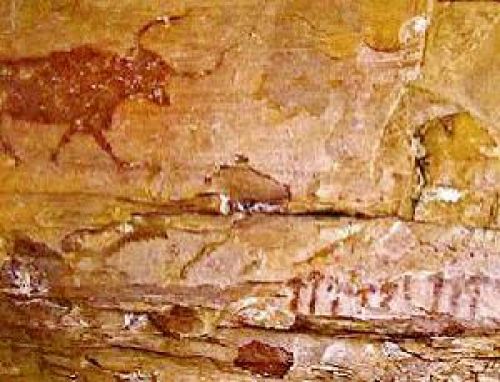EUROPEANS may have used magic mushrooms to liven up religious rituals 6000 years ago. So suggests a cave mural in Spain, which may depict fungi with hallucinogenic properties - the oldest evidence of their use in Europe.
The Selva Pascuala mural, in a cave near the town of Villar del Humo, is dominated by a bull. But it is a row of 13 small mushroom-like objects that interests Brian Akers at Pasco-Hernando Community College in New Port Richey, Florida, and Gaston Guzman at the Ecological Institute of Xalapa in Mexico. They believe that the objects are the fungi Psilocybe hispanica, a local species with hallucinogenic properties.
Like the objects depicted in the mural, P. hispanica has a bell-shaped cap topped with a dome, and lacks an annulus - a ring around the stalk. "Its stalks also vary from straight to sinuous, as they do in the mural," says Akers (Economic Botany, DOI: 10.1007/s12231-011-9152-5).
This isn't the oldest prehistoric painting thought to depict magic mushrooms, though. An Algerian mural that may show the species Psilocybe mairei is 7000 to 9000 years old.
Earliest evidence for magic mushroom use in Europe - life - 06 March 2011 - New Scientist
Risultati da 1 a 1 di 1
Discussione: Earliest evidence for magic mushroom use in Europe
-
07-03-11, 22:22 #1Forumista esperto

- Data Registrazione
- 08 Apr 2009
- Località
- Ελευσίνα
- Messaggi
- 17,701
-

- 3,634
-

- 6,648
- Mentioned
- 32 Post(s)
- Tagged
- 5 Thread(s)
 Earliest evidence for magic mushroom use in Europe
Earliest evidence for magic mushroom use in Europe
Discussioni Simili
-
VIDEO [Modern Europe vs Ancient Europe]
Di el Doge 91 nel forum Destra RadicaleRisposte: 4Ultimo Messaggio: 04-10-08, 15:10 -
“Evidence of Revision”: connecting the dots
Di Abbott (POL) nel forum Politica EsteraRisposte: 0Ultimo Messaggio: 07-04-08, 18:19 -
Report: Confronting the evidence 24-09-2006
Di Shaytan (POL) nel forum Padania!Risposte: 4Ultimo Messaggio: 28-09-06, 18:42 -
Confronting the Evidence
Di Ochtopus (POL) nel forum Politica NazionaleRisposte: 35Ultimo Messaggio: 25-09-06, 12:25 -
John Malvo Is Innocent! New Evidence!
Di freemalvo nel forum HdemiaRisposte: 0Ultimo Messaggio: 11-01-06, 21:15





 Rispondi Citando
Rispondi Citando